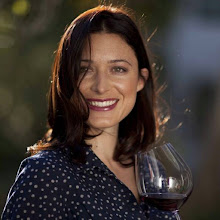Sake Survival Guide
A Cellargal* Book & Wine Pairing
Inspired by the Novel
Unbroken: A World War II Story of Survival,
Resilience, and Redemption
By Laura Hillenbrand
04/26/2012 |
| http://www.amazon.com/Unbroken-World-Survival-Resilience-Redemption/dp/1400064163 |
Sawa Sawa Sparkling Sake Milled to 70%, this sparkling sake is off dry and very popular with aficionados and novices alike. It tastes like angel food cake - light, delicate, uplifiting. Not overly sweet, with a hint of marzipan at the finish. This is a lively party starter and/or clever alternative to sparkling wine. It pairs with spicy foods espeically those featuring nutty sweet flavors (e.g. apps with spicy peanutdipping sauce). Packaged in a cute, single-serving bottle, this also makes a clever gift or party favor.
Hakutsuru Excellent Junmai Milled to 70%, this Sake is insanely delicious for the price, great with grilled salmon kama or miso beef! Can be enjoyed warm or chilled.
Taru Sake, Kikusakari Milled to 60% and aged in japanese cedar, which give the distinctive woody aromas and lingering finish that it is known for. It also preserves a sense of freshness and some delicacy, which not all taru-sakes do. One of the best taru-sakes we have tried. Cedar ageing adds a warmness that you can breathe in. pair with smoked tomatoes with burrata and Thai basil.
Ten To Chi "Heaven and Earth" Junmai Daiginjo Sake Milled to 50%, this sake was originally tasted at the annual Sake Day in San Francisco and has been in demand ever since. Produced by the Kobayashi family on Niigata by toji master Kenji Fujii who has been making sake for more than four decades at the Musashino Shuzo. The rice used in Heaven and Earth is Koshi Tanrei. Grown only in Niigata, the Niigata Sake Institue spent 15years developing the varietal. Heaven and Earth is one of the first Koshi Tanrei based sakes to be made commercially available in Japan and was launced in 2011. Made with 100% soft water sourced from natural spring water from the Maki district of Niigata, this sake has sweet and savory notes of chestnuts, is texturally pleasing, and subtley aromatic. This is more of a powerhouse sake fit for more substantial meals like fettucini alfredo or a cream based soup.
Rihaku "Dreamy Clouds" Tokubetso Junmai Nigori Sake (Unfiltered) Milled to 59%, this unfiltered sake still has the lees in it, which gives it a cloudy appearance and a bit sweeter taste than a more modern filtered sake. Made from the Gohyakumangoku rice by Rihaku Shuzo in the Shimane Prefecture, it is rich, creamy and quite long at the end.
Legend
Junmai: Sake that is made up of water, koji mold, yeast and rice that has been milled 30% with 70% of each grain remaining.
Honjozo: Sake that is made up of rice, water, koji mold, yeast and a portion of added distilled alcohol, and the rice is milled 30% with 70% of each grain remaining.
Junmai Ginjo: Sake that is made up of water, koji mold, yeast and rice milled 40% with 60% of each grain remaining.
Ginjo: Sake that is made up of rice, water, koji mold, yeast and a portion of added distilled alcohol, and the rice is milled 40% with 60% of each grain remaining.
Junmai Dai Ginjo: Sake that is made up of water, koji mold, yeast and rice milled 50% with 50% of each grain of rice remaining.
Dai Ginjo: Sake that is made up of rice, water, koji mold, yeast and a portion of distilled alcohol, and the rice is milled 50% with 50% of each grain remaining.
-Sake can be made in different fashions to produce more variations of sake. For example if a brewer were to leave in some of the rice polishings the result would be a cloudy sake commonly referred to as Nigori (unfiltered sake). If a brewer decided to store his freshly brewed sake in cedar tanks this would result in Taru (cedar sake). Or as most breweries in Japan do, if they release a sake that has not been pasteurized the typical two times - in most cases - then the result is Nama (unpasteurized sake.)
-If brewers decide to age their sake longer than a typical fermentation cycle, then the result is Koshu (aged sake). If brewers are looking to try something different by adding more sake instead of more water to the brewing process the result is Kijoshu (dessert sake). And lastly if a brewer decides to allow his sake to reach peak fermentation without adding the typical amount of water to bring sake back to a diluted state of roughly 15%-16% alcohol level then the result is a sake that has a alcohol percentage along the lines of 17%-19% called Genshu (undiluted sake).


No comments:
Post a Comment